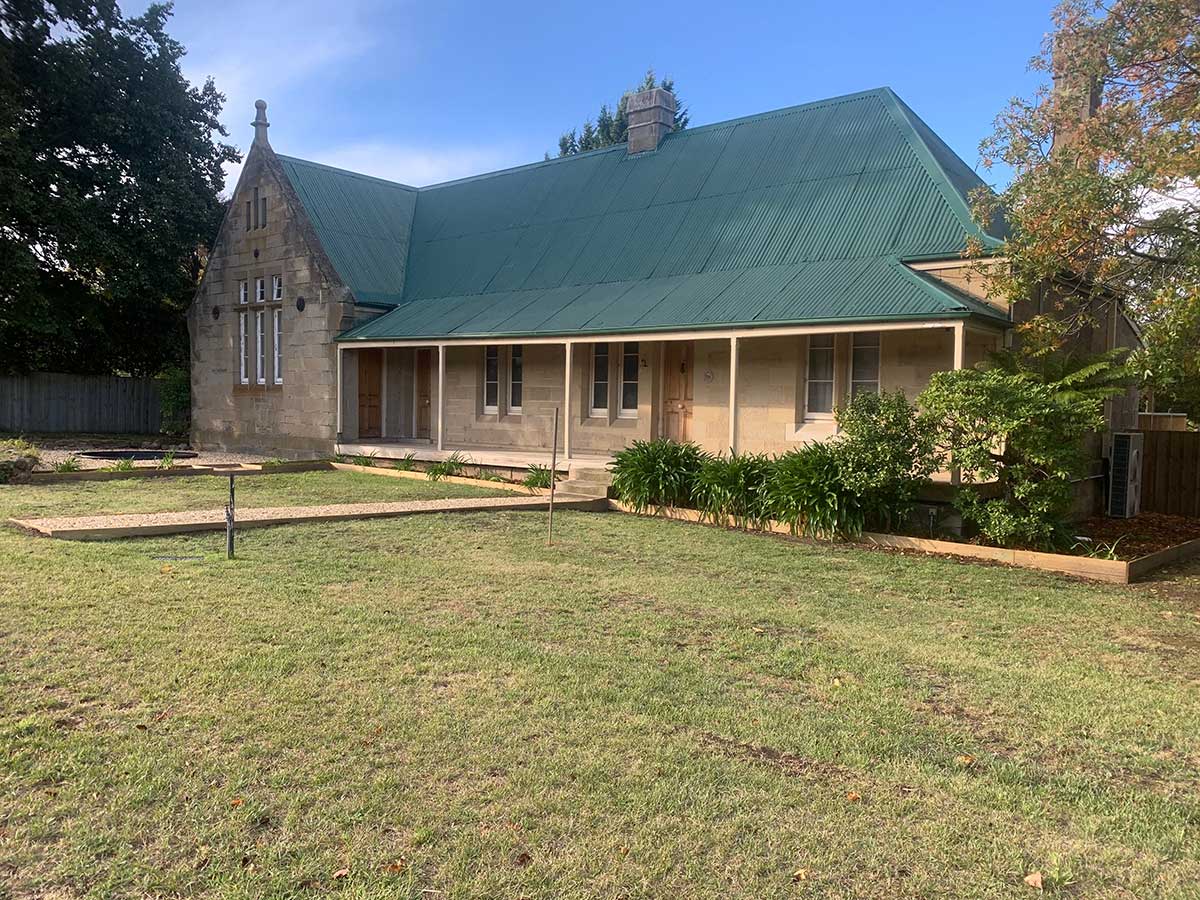Colebrook, Tasmania

Colebrook is a quiet little farming settlement which was developed by convict labour as the site of a convict probation station. The town was originally named Jerusalem and later as 'Colebrook Dale’. The area around Colebrook was first explored by Europeans in early 1804 and by 1806, with serious food shortages in Hobart Town, expeditions of soldiers were being sent into this area to kill kangaroos and emus.
It is claimed that during one of these expeditions Private Hugh Germain, a well educated member of the Royal Marines, started giving various local sites exotic names. Thus to the west of 'Jerusalem' (Colebrook) lies the incongruously named village of Bagdad and north of the town, past Lake Tiberius, is the village of Jericho. It is said that Germain travelled through the area with a copy of The Bible and the Arabian Nights and delighted in giving places religious and Middle Eastern names. It is thought that the Seven Hills surrounding the town gave the inspiration for his choice of the name Jerusalem.
The town was almost completely destroyed by the fires on February 7, 1967, but has since been rebuilt. Many buildings were lost.

Remnants of the Jerusalem Probation Station
In 1828 Andrew Tolmey was granted land at Colebrook Park, one of the earliest European settlers in the area, and had completed the construction of a house by 1831. Coal was discovered in the area prior to 1820 but was not mined extensively until much later. On Thomas Scott’s 1824 chart of Van Diemen’s Land was marked ‘plenty of coal to be found here’, north of Jerusalem Plains. In 1878 Jerusalem had an output of 1,225 tons of coal and 2,202 the following year.
Colebrook was developed as a site for a convict probation station in 1834. Remnants of the station, which included a barracks, hospital and church, may still be seen at Colebrook. Up until the late 1870’s the Jerusalem Probation Station’s Church was used by the town’s Anglicans. The perimeter walls of the probation station were demolished in the 1850’s and some of the rubble was used in the footings of St Patrick’s Catholic Church. The building still stands and is today used as a barn.
Jerusalem Propbation Station
There are a couple of interesting buildings in town. The Colebrook Progress Association offers a chance to take a stroll through history and enjoy country hospitality on the 1st Sunday of each month (depending on numbers). Otherwise you can walk through the village yourself and visit what remains of the old Jerusalem Probation Station, St James' Anglican Church, with it's beautiful stain glass window, and St Patrick's Catholic Church.

The Police Station in the town's main street is a handsome sandstone structure built by convicts to a design by the colonial architect, James Blackburn. It is now a private residence and is not open for inspection. The convicts built a gaol adjacent to the Police Station at the same time as they were building the Police Station. There is a story (more a legend that a hard fact) that the famous Tasmanian bushranger, Martin Cash, hid in a pear tree near the police station after he had managed to escape from the village lockup.

Colebrook History Room
The Colebrook History Room is located in the pleasant park on the former school site, is open by appointment only. Tel: (03) 6259 7140. The history room has a wonderful collection of local history memorabilia, artifacts and information. Location: 14 Richmond Street, Colebrook

St Patrick's Catholic Church
St Patrick’s dominates Colebrook and is regarded as one of the most architecturally significant buildings in Tasmania. It is one of three churches in the State designed by Augustus Welby Northmore Pugin (1812–52), England’s greatest early-Victorian architect and a pioneer of the Gothic Revival style. In Britain his work culminated with his collaboration in designing the interior of the Palace of Westminster and the iconic clock tower which houses ‘Big Ben’. Pugin was a close friend Robert William Willson (1794–1866), first Catholic Bishop of Hobart.
St Patrick’s was designed in 1843 but only completed five years after Pugin’s death. Construction of the church began in 1855 and was supervised by local architect Frederick Thomas. The chief builder, Patrick Lynch, had been a pupil of Pugin and carved the church's beautiful screen and sedilia. In September 1895 the church suffered serious structural damage from a storm which swept through the Coal River Valley. While the building was repaired the bellcote was not replaced until 2007.

St James' Anglican Church
Before St James was built the Anglican community used the “Old Prison Church” as a place of worship until the 1870’s. After this services were held in a small weatherboard building which had previously been used as a schoolhouse. It is believed that that an attempt was made to build a new church in the late 1850’s and that a foundation stone for a building was laid but no further progress was made. In 2017 St James of Jerusalem was placed on a list of over 70 churches to be sold by the Anglican Church to meet its commitment to the National Redress Scheme to compensate victims of criminal sexual abuse by the clergy. The Anglican church cemetery contains a few gravestones that predate the church. Location: 7 Richmond Street, Colebrook.

The Tasmanian Main Line Railway Company first built the 3 foot 6 inch narrow gauge line through Colebrook as part of their Hobart to Evandale (11 km south of Launceston) Line in 1876, and ever since the line has had an interesting history of ownership. By 2009 the Tasmanian Government purchased back the entire railway network under a state-owned company called Tasmanian Railway Pty Ltd, trading as TasRail. The original railway station, which burned down in 1967 had a Star of David worked in the fretwork.
![]()
